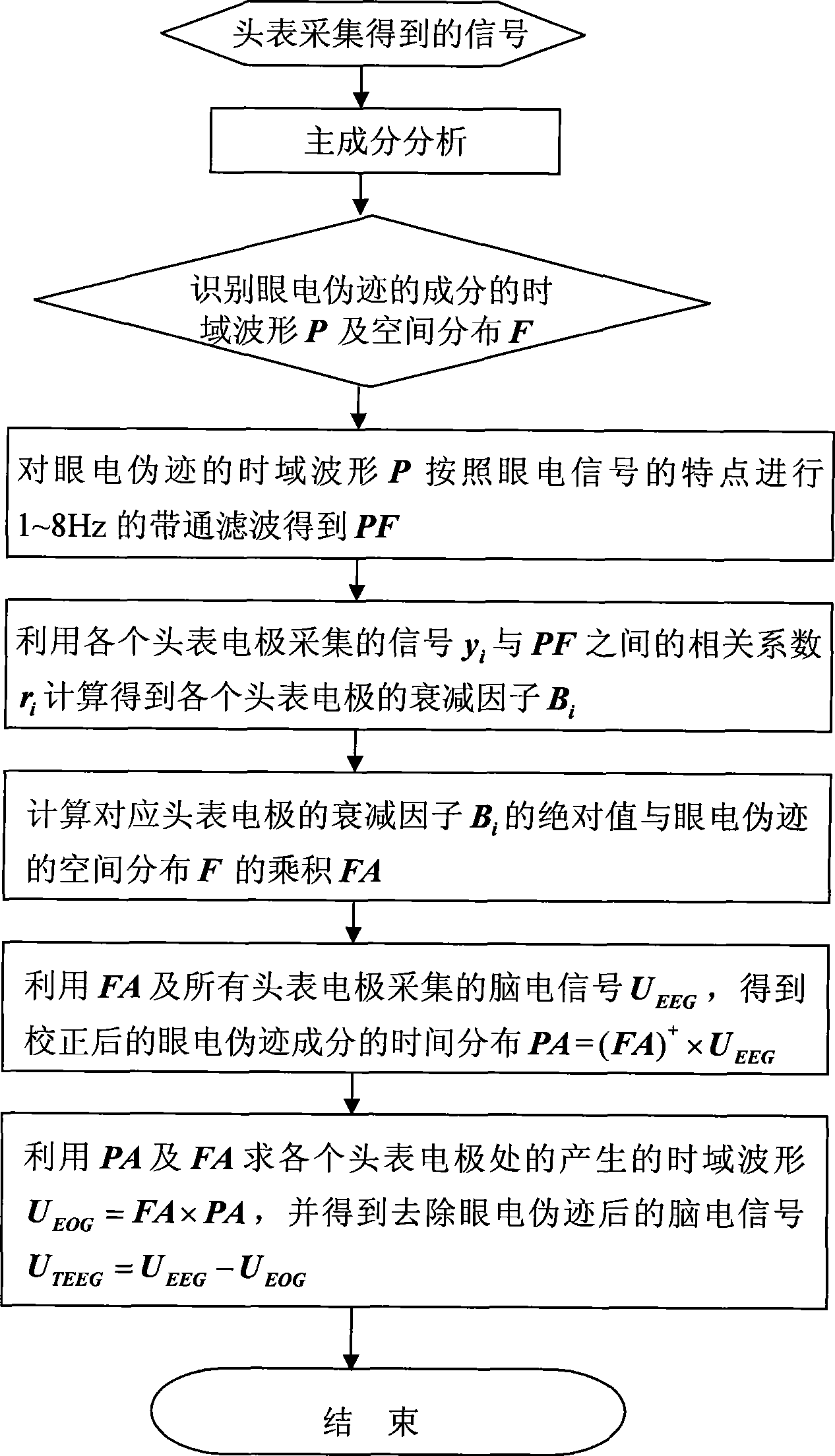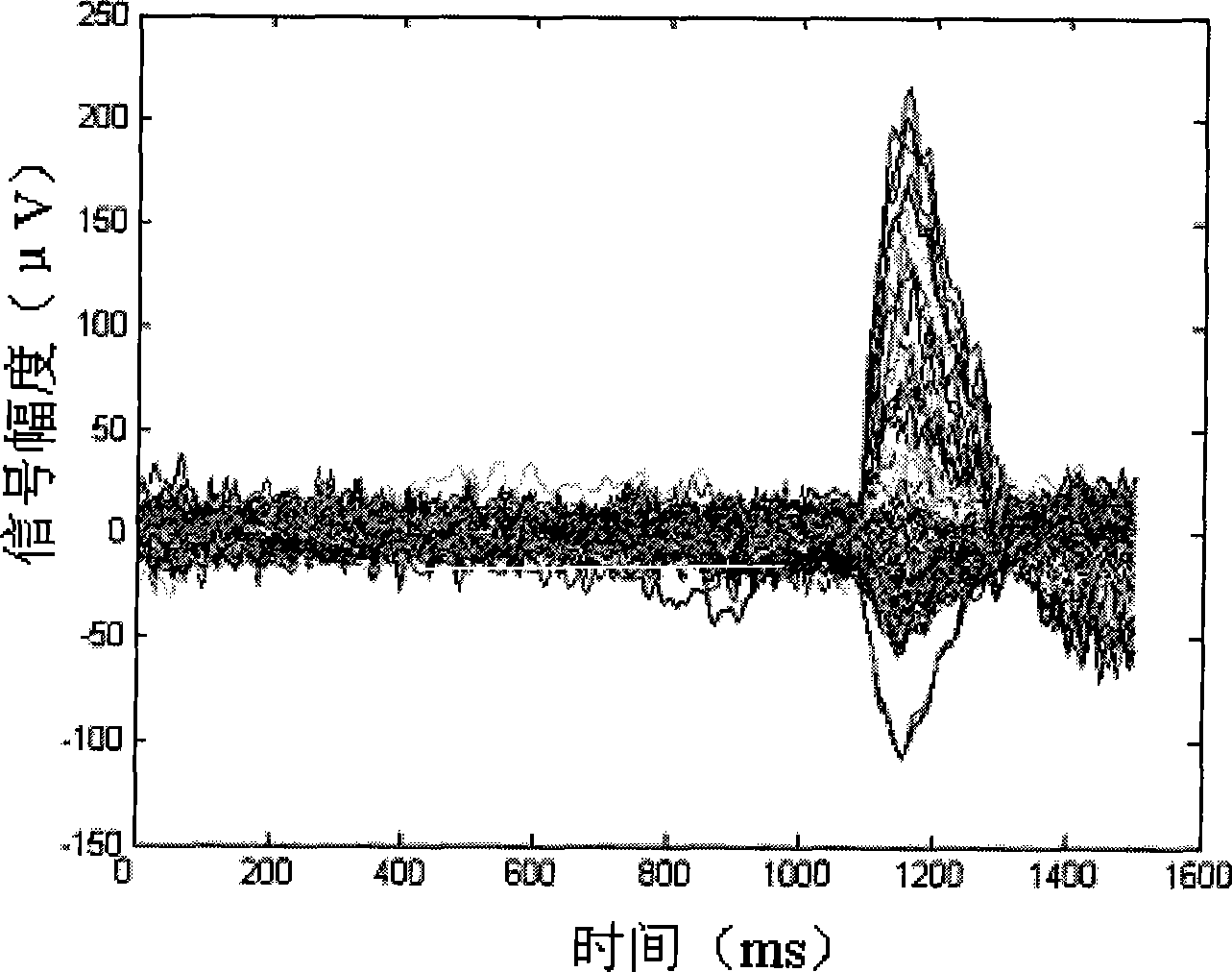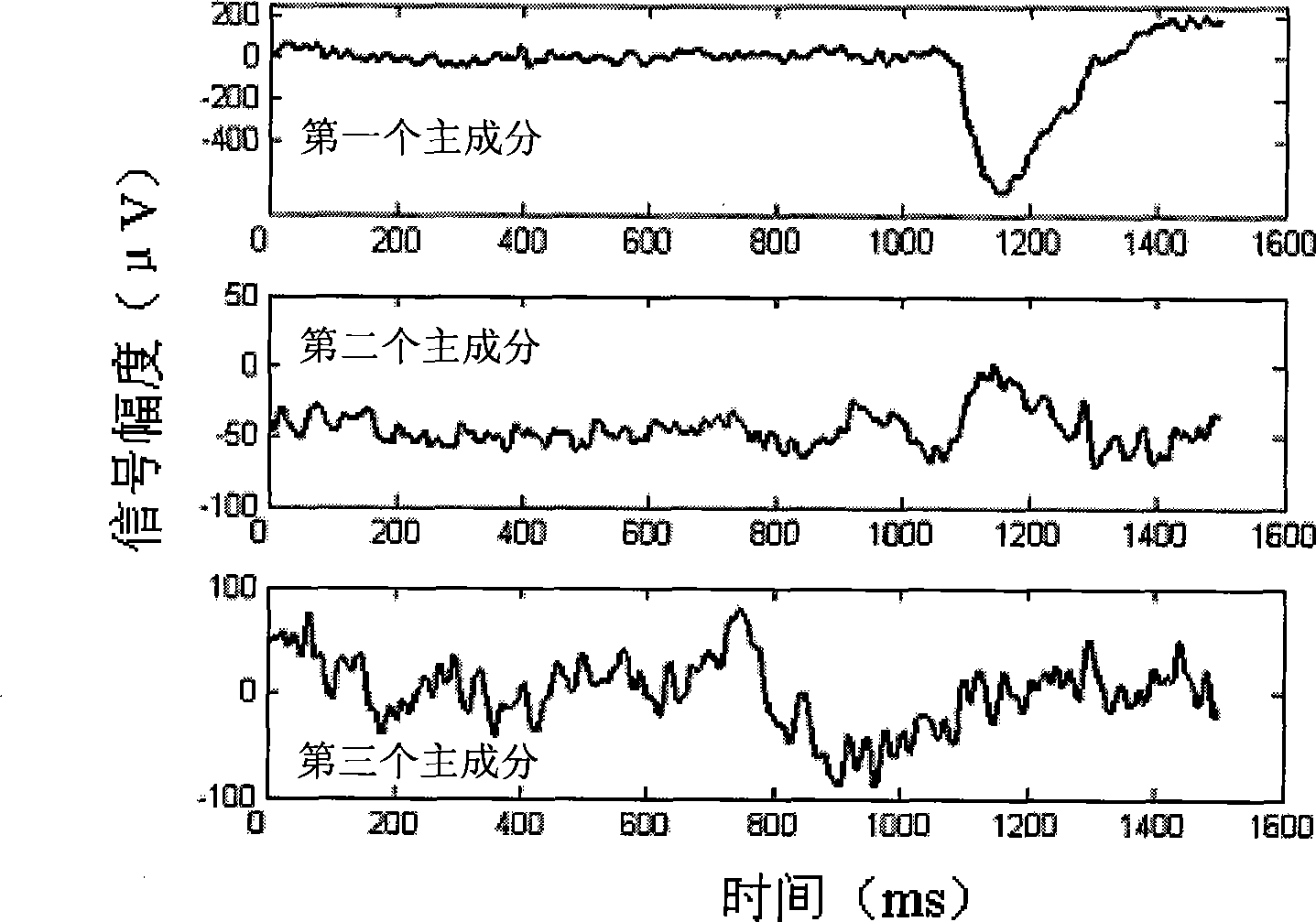Method for removing ocular artifacts in brain-electrical signal
A technology of oculoelectric artifacts and EEG signals, applied in the field of bioinformatics, to achieve the effect of easy recognition
- Summary
- Abstract
- Description
- Claims
- Application Information
AI Technical Summary
Problems solved by technology
Method used
Image
Examples
Embodiment Construction
[0032] The present invention will be further described below in conjunction with the accompanying drawings.
[0033]In order to illustrate the process and effect of a method for removing electrooculogram artifacts in EEG signals mentioned in the present invention, a section of real 128-lead EEG signal Y containing electrooculogram artifacts will be used, wherein each lead The signal of is denoted as y i , i=1~128, such as figure 2 shown. It can be seen from the figure that there are obvious electroocular artifacts at the time of 1000ms to 1400ms. Decompose the principal components of Y to obtain the time-domain waveforms of the first three principal components after decomposition, such as image 3 As shown, according to the characteristics of the electro-oculogram artifact, it can be concluded that the first principal component is the electro-oculogram artifact component P, and the spatial distribution of the first principal component can be obtained through principal comp...
PUM
 Login to View More
Login to View More Abstract
Description
Claims
Application Information
 Login to View More
Login to View More - R&D
- Intellectual Property
- Life Sciences
- Materials
- Tech Scout
- Unparalleled Data Quality
- Higher Quality Content
- 60% Fewer Hallucinations
Browse by: Latest US Patents, China's latest patents, Technical Efficacy Thesaurus, Application Domain, Technology Topic, Popular Technical Reports.
© 2025 PatSnap. All rights reserved.Legal|Privacy policy|Modern Slavery Act Transparency Statement|Sitemap|About US| Contact US: help@patsnap.com



